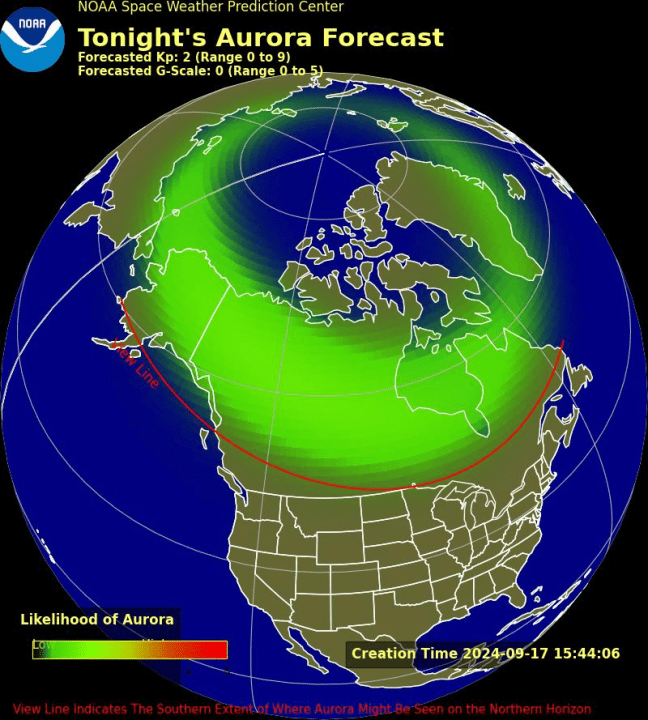(NEXSTAR) — It was an active weekend for the sun, which hurled multiple solar flares into space that impacted Earth, bringing the northern lights to part of the U.S. and sparking an alert from federal forecasters.
A pair of coronal mass ejections (CMEs) were detected Friday and Saturday, according to NOAA’s Space Weather Prediction Center (SWPC). CMEs are explosions of plasma and magnetic material from the sun that can collide with Earth’s atmosphere, causing the northern lights along with other less-enjoyable phenomena.
Parts of the U.S. were able to catch some of those northern lights Sunday night, and again on Monday.
Conditions sparked by the CMEs became so strong Monday night that the SWPC issued a “severe geomagnetic storm alert” around 11 p.m. ET. According to the SWPC, the “major disturbance in Earth’s magnetic field” was expected to reach G4 strength.
The SWPC uses a five-point scale to categorize a geomagnetic storm’s strength. At the lowest end is G1, described as minor storms that can lead to aurora being visible in Maine and Michigan’s Upper Peninsula. A G5 storm, described as extreme, could send the northern lights as far south as Florida and southern Texas.
G4 storms, considered severe, have been known to bring the northern lights into Alabama and northern California. Such storms can also spark “widespread voltage control problems,” throw off navigation systems, and impact high-frequency radio signals.
The SWPC warned of such conditions Monday, saying it had notified infrastructure operators “to mitigate any possible impacts” and that there may be impacts to satellite operations and GPS systems.
Thankfully, U.S. power grid operators are kept well-informed about the potential impacts of space weather, SWPC Service Coordinator Shawn Dahl told Nexstar via email Tuesday. He noted that the electrical grid weathered Monday’s brief storm well.
The geomagnetic storm conditions are also slowly improving, reducing the likelihood of potential impacts on the power grid. That does, unfortunately, mean your chances of seeing the northern lights on Tuesday are growing slim.
According to Dahl, aurora chances do continue for Tuesday night, but coverage is diminishing with improving storm conditions. The northern lights may only be visible in the far northern states, he added.
The latest aurora forecast from the SWPC, seen below, shows even Alaska and Canada — which frequently have strong chances of seeing the northern lights — have only a low likelihood of a celestial show Tuesday night.
The forecast for aurora viewers doesn’t improve in the coming days either. According to Dahl, “less than G1 conditions” are predicted for Wednesday and Thursday.
We will, most likely, get another chance to see the northern lights again before the year ends.
The sun is progressing through an active pattern known as Solar Cycle 25 in which it flips its poles. As we near the peak of that 11-year cycle, researchers say we can expect to see more strong solar storms — and, hopefully, more strong bouts of the northern lights.
